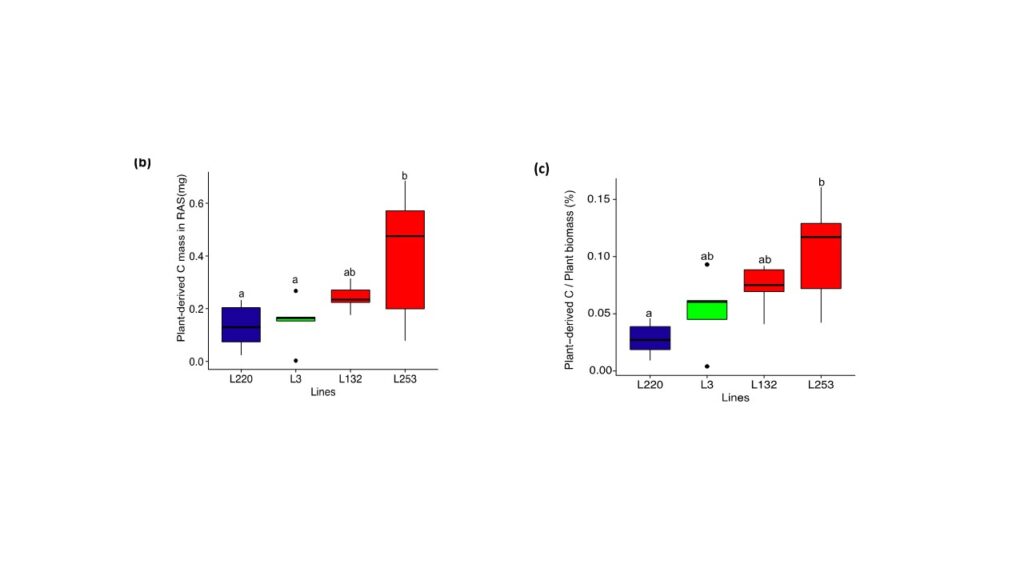Among the strategies for capturing atmospheric CO2 that could be implemented to achieve carbon neutrality in 2050, storing carbon (C) in soils is a promising avenue. Storing C in soils has the double interest of contributing to the reduction of atmospheric CO2 and increasing soil fertility (see Initiative 4‰[1]). In this perspective, a scientific collaboration bringing together two CEA/DRF teams (BIAM/LEMIRE and LSCE ), in association with the Eco&Sols unit (IRD, Montpellier) and with the financial support of the DRF-Impulsion and MOPGA programmes, undertook a study on pearl millet, a cereal mainly grown in Africa and India. This study demonstrated that the use of natural carbon isotope abundances (13C and 14C) can be used to quantify rhizodeposition (C input by the roots into the soil) over a few weeks of growth. In concrete terms, the study assessed the potential to store C in the soil of millet lines with varying capacities to aggregate the soil around their roots.
The aggregation of soil particles around the roots is one of the adaptive traits of plants to certain abiotic stresses. This phenomenon was first demonstrated in 1887 on succulent plants in a desert context.

The extension of this work to cultivated plants made it possible to show that this rhizospheric aggregation mechanism contributed to the tolerance of plants to water stress.To assess rhizodeposition of C in soil, the researchers grew four lines of millet (Pennisetum glaucum, C4 plant: δ13C of -12.8 ‰, F14C = 1.012) with different amounts of root-adhering soil, in C3 soil (organic matter dominated by C3 plant restitutions with δ13C of -22.3 ‰, F14C =1.045). This comparative study yielded significant results after only 4 weeks of cultivation, revealing variable C storage efficiency between lines.



The amount of C in the rhizosphere relative to the amount of root-adhering soil, between the different peral millet lines varied significantly, suggesting a different rhizodeposition efficiency between these lines. Furthermore, the combined analysis of 13C and 14C measurements showed that this approach allows to measure the supply of plant C to the soil at an early stage of pearl millet growth and to assess the proportion of old soil C that was breathed in by soil microorganisms during the supply of this energy-rich substrate (“priming effect“). Using a conceptual model integrating C contents and carbon isotope measurement data (13C and 14C), it was possible to quantify this priming effect for all pearl millet lines and to show that it was lower for lines with high rhizosphere aggregation. “In this way, we were able to demonstrate that pearl millet lines with more root-adhering soil are able to store more C around the roots while preserving the old C“, concludes Thierry HEULIN, researcher at BIAM/LEMiRE.
In the next stage, the identification of the genes controlling this trait (study in progress) could enable these results to be included in varietal selection programmes to promote carbon storage in agricultural crops, with the aim of contributing to carbon neutrality objectives in the near future
REFERENCES
[2] Équipe d’Écologie Microbienne de la Rhizosphère UMR 7265 BIAM CEA-CNRS-AMU
[3] Laboratoire des Sciences du Climat et de l’Environnement, UMR CEA CNRS UVSQ 8212, Université Paris-Saclay
[4] Fabrique de savoirs – DRF Impulsion (cea.fr)
[5] Make Our Planet Great Again